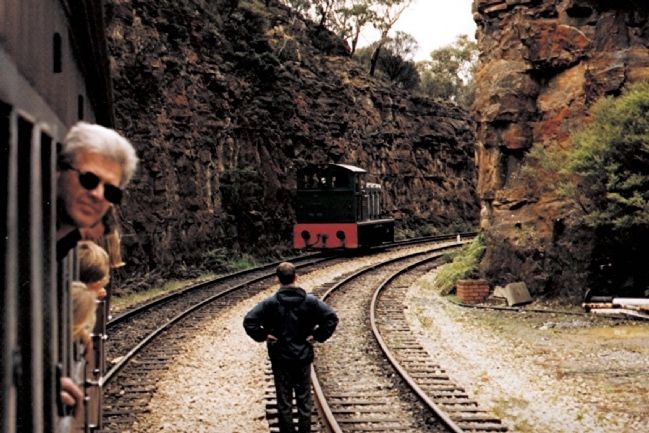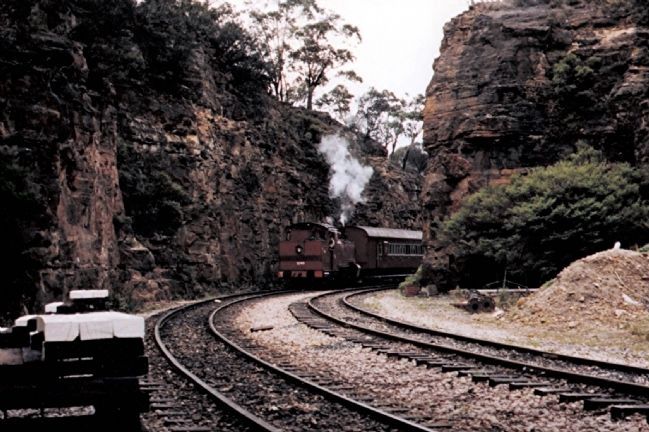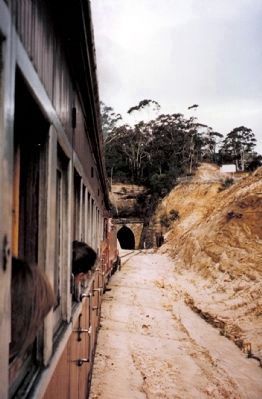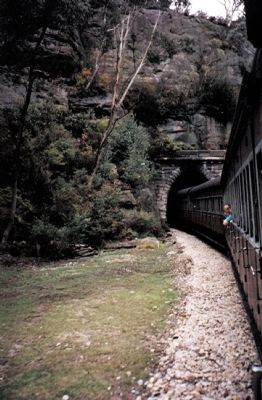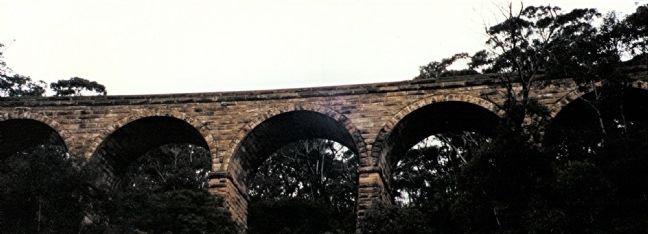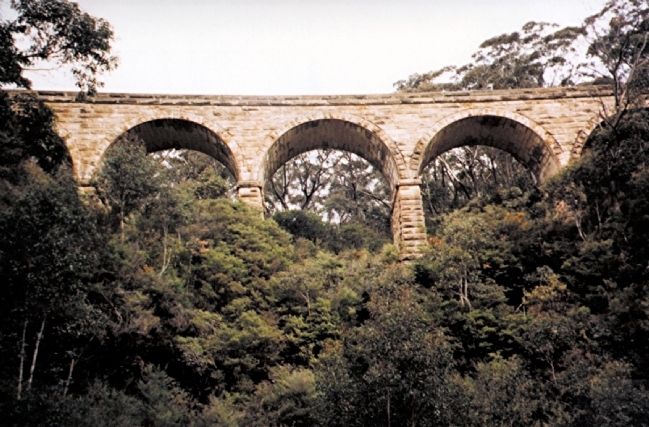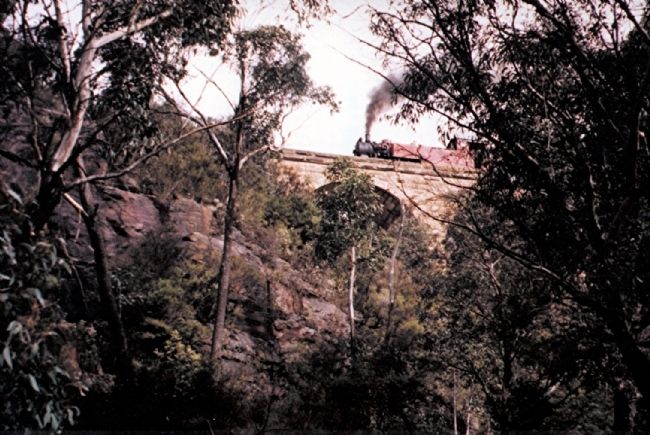Near Clarence in Lithgow Council, New South Wales, Australia — Oceania
The Great Zig Zag
Lithgow
A railway zig zag is a series of reversing ramps used to avoid very steep grades. John Whitton, Engineer in Chief NSW Government Railways 1856-90, chose this as the economical method for the descent from Clarence to Lithgow. Built during 1866-69 by contractor Patrick Higgins, it involved massive rock excavations, a tunnel and three stone arch viaducts. During its 41 years of operation it accelerated the development of western New South Wales and achieved world renown as a major engineering work.
Erected 1992 by Dedicated by The Institution of Engineers, Australia.
Topics. This historical marker is listed in these topic lists: Bridges & Viaducts • Industry & Commerce • Man-Made Features • Railroads & Streetcars.
Location. 33° 28.641′ S, 150° 13.262′ E. Marker is near Clarence, New South Wales, in Lithgow Council. Marker can be reached from Chifley Road, 0.1 kilometers east of Petra Avenue. Zig Zag Railway, Clarence Station is 150 km west of Sydney in the Blue Mountains, 10 km East of Lithgow on Chifley Road. Touch for map. Marker is in this post office area: Clarence NSW 2790, Australia. Touch for directions.
Regarding The Great Zig Zag. The Zig Zag Railway with its two tunnels, three beautiful sandstone viaducts and many man made ledges hewn in the mountainside was internationally acclaimed as one of the great engineering wonders of the 19th century. Designed by Mr John Whitton, the then Engineer in Chief of the NSW Government Railways, construction of the Great Zig Zag began in 1866 and it was formally opened in October 1869. All rail traffic travelling west over the mountain traversed the single track Zig Zag. By the tum of the century it was unable to cope with the ever increasing volume of traffic without creating serious bottlenecks. In 1907 construction of the present day ten tunnels and double track main railway line was commenced.
Also see . . .
1. Zig Zag Railway, Lithgow, New South Wales, Australia. Website homepage of the 19th Century Engineering Masterpiece (Submitted on September 26, 2012, by Cosmos Mariner of Cape Canaveral, Florida.)
2. Zig Zag Railway, Blue Mountains, Australia. Rail Nutter News website entry:
High in the Blue Mountains west of Sydney Australia, there is a breathtaking topography of dizzying crags and cliffs through which the Zig Zag Railway line was built in 1869. (Submitted on September 26, 2012, by Cosmos Mariner of Cape Canaveral, Florida.)
Additional keywords. Australia
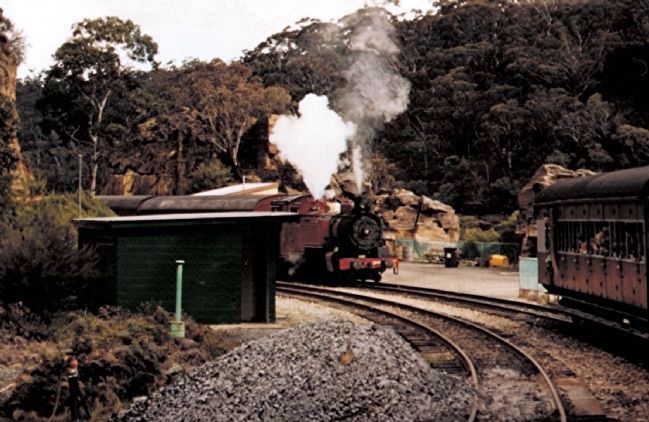
Photographed By Cosmos Mariner, October 5, 1996
2. Steam locomotive approaching passenger train
Locomotives at Zig Zag range from suburban tank engines, to express engines and a mighty 400 Class Beyer Garrett. Additional engines are acquired from time to time and are progressively restored to operating condition.
Credits. This page was last revised on November 23, 2023. It was originally submitted on September 26, 2012, by Cosmos Mariner of Cape Canaveral, Florida. This page has been viewed 2,108 times since then and 59 times this year. It was the Marker of the Week January 6, 2013. Photos: 1, 2, 3, 4, 5. submitted on September 26, 2012, by Cosmos Mariner of Cape Canaveral, Florida. 6, 7, 8, 9, 10. submitted on September 27, 2012, by Cosmos Mariner of Cape Canaveral, Florida. • Bill Pfingsten was the editor who published this page.


